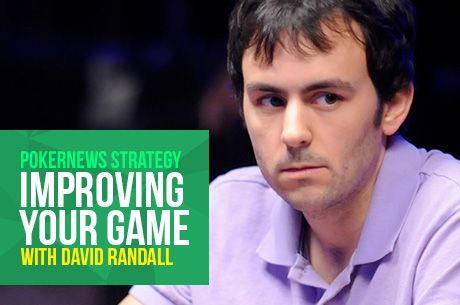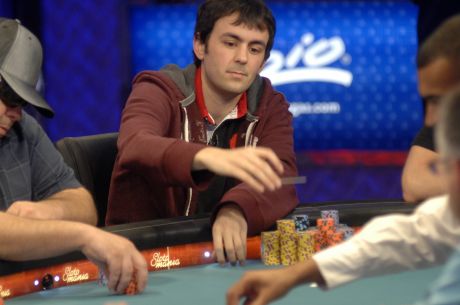Poker Shrink Vol. 70: Interaction Effect

All fold to the small blind, who completes. The big blind raises, the small blind folds. Then two rounds later, same scenario, same result. Next round there is a limper, the small blind completes, the big blind raises, and both opponents fold. This is easy for the big blind. Two rounds later another limper, the small blind completes again, the big blinds raises again, and the limper reraises. Oops!
That is an example of the interaction effect. Generally speaking, in scientific research we have a dependent variable and an independent variable. The independent variable (iv) affects the dependent variable (dv). So alcohol as the independent variable affects sleep, the dependent variable. Alcohol can put you to sleep and we can demonstrate that with a study showing the effect of the iv on the dv.
Now in most experimental testing we are looking to see if the independent variable will have any effect on the dependent variable and we report what that effect is. So, does noise (iv) affect sleep? We make noise and see if it wakes someone up or perhaps prevents him from falling asleep. We give kids food with high sugar content (iv) and see if they behave (dv) any differently.
But sometimes there is more than one independent variable. As in our first poker example. The dependent variable was winning the hand. The independent variable was the other player �� but when we introduced the limper, that meant we had two independent variables and we needed both of them to fold to our big blind��s raise. What is clear is that experiments get more complicated whenever there is more than one independent variable.
You take a sleeping pill, you fall asleep. If you take sleeping pill with a glass of vodka, you fall really deeply asleep. Two independent variables interact to cause a different reaction or a new dependent variable.
Here the independent variables are doing something we did not anticipate; they might actually be influencing each other. This potential is what we call the interaction effect. You raise, the limper reraises, and the small blind makes it four bets. Things have changed. Those independent variables are interacting and being very independent.
At the poker table, we are dealing with lots of independent variables and they change as they interact. For instance, the rock opening a hand in late position is not the same as that rock opening under the gun. Same player, different independent variable action. Add in another player, and now they can interact with each other and you have to consider the interaction of their positions, stack sizes, etc. And, of course, facing the player in Seat 3 and the player in Seat 7 is not the same set of independent variables as facing players in Seats 3 and 5.
Now clearly we can take this to absurd limits. With a full table of players and a moving dealer button and shifting stack sizes, very quickly the combination of independent variables makes the interaction effect something that no one could keep track of. But at a more basic level, we can learn from the interaction effect that some second and third independent variables are worth paying attention to.
Certainly, when the third player enters the hand this changes the play drastically. Which is why we often try to isolate against just one player �� we want to reduce the interaction effect between those two players, between those two independent variables.
The key to using the interaction possibilities to your advantage, like any other edge you might get at the poker table, is being aware of the possibilities. When both players check to you, they put you in a position of power. Of course, now two players are also in position to check-raise you, if you bet. The card on the turn now has to miss two other drawing hands not just one. But when it does, you have two potential crying calls to increase your pot.
A famous scientist once said to his students: ��Remember the important part about independent variables is that they are independent, we don��t control them and therefore they can change everything we think we know about the dependent variable.�� Or about the poker game.








